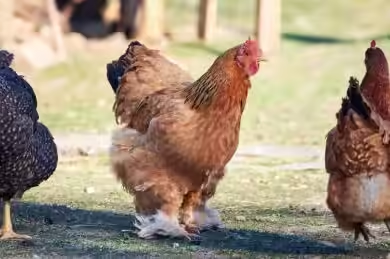Last updated on July 30, 2025
So, you’re looking to maximize your soybean farming profit per acre? You’re not alone. It’s a question every soybean farmer asks, and it’s a crucial one. I’m here to help you navigate the ins and outs of soybean profitability, breaking down the factors that influence your bottom line and offering strategies to boost your income. We’ll explore everything from soybean yield per acre to market prices, production costs, and emerging trends. Let’s dig in!
Understanding Soybean Profitability Per Acre: A Deep Dive
But, let’s get real about soybean farming economics. It’s more than just planting and harvesting; it’s a business. And like any business, understanding your profitability is key. We’re talking about the financial health of your operation, and that starts with analyzing your profit per acre.
Why Per-Acre Profit Analysis Matters
Why focus on per-acre profit? Because it gives you a clear, standardized way to measure efficiency and compare performance.
- Benchmarking: It allows you to compare your farm’s performance against other farms, industry averages, and even your own past performance.
- Decision-Making: It helps you make informed decisions about resource allocation, input purchases, and which fields are most profitable.
- Financial Planning: It’s essential for budgeting, securing loans, and assessing the overall financial health of your soybean operation.
- Identifying Inefficiencies: By analyzing profit on a per-acre basis, you can pinpoint areas where costs are too high or yields are too low, allowing for targeted improvements.
- Risk Management: Understanding your per-acre profit potential and its variability helps you assess risk and make informed decisions about crop insurance and other risk mitigation strategies.
In essence, per-acre profit analysis is the compass that guides your soybean farming decisions. It’s not just about knowing if you made money, but how and where you made it. This level of detail is crucial for long-term sustainability and growth in soybean farming.
Average Soybean Yield Per Acre by Region: Soybean Yields Across the US
And, now we get to the heart of “how much do you make off an acre of soybeans?” It all starts with how much you can grow. Soybean yield per acre is the single biggest factor influencing your revenue. Let’s break down the numbers and see where different regions stack up.
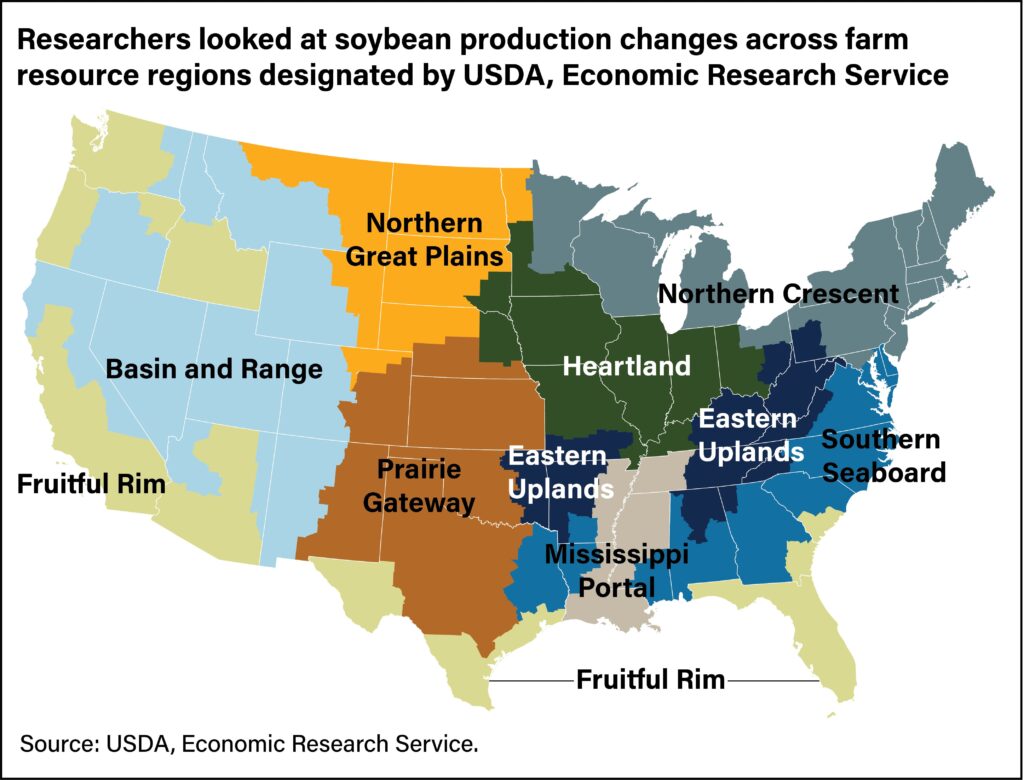
National Average Yields: A Starting Point
It’s tempting to look at the national average soybean yield as a benchmark. The USDA’s National Agricultural Statistics Service (NASS) is the go-to source for this data. You can find detailed reports and statistics on their website.
- USDA NASS Data: The USDA NASS provides comprehensive data on crop yields, including soybeans. Their Quick Stats database allows you to search for historical and current yield information at the national, state, and even county levels. This is crucial for understanding long-term trends and making informed decisions.
Keep in mind, though, that the national average is just that—an average. It doesn’t tell the whole story of the regional variations that can significantly impact your bottom line.
Regional Variations: Why Location Matters
Soybean yields aren’t uniform across the United States. Several factors contribute to significant differences from region to region:
The Midwest:
States like Iowa, Illinois, Minnesota, and Indiana consistently achieve high yields. This is due to a combination of factors:
- Fertile Soils: The deep, rich soils of the Midwest, particularly the Mollisols, provide an ideal environment for soybean growth.
- Optimal Rainfall: The region generally receives adequate rainfall during the growing season, which is crucial for soybean development.
- Advanced Farming Practices: Midwestern farmers have often adopted advanced technologies and management practices, such as precision agriculture and high-yielding varieties, earlier than other regions.
The South:
The southern states, while still important soybean producers, often face challenges that can limit yields:
- Heat Stress: High temperatures, especially during flowering and pod development, can reduce yields.
- Variable Rainfall: Drought conditions and uneven rainfall distribution are more common in some parts of the South.
- Soil Variability: Southern soils can be more variable, with some areas having less fertile or more problematic soils (e.g., heavy clay or sandy soils).
The East:
The eastern states also contribute to soybean production, but yields can vary depending on local conditions:
- Growing Season Length: The length of the growing season can be a limiting factor in some northern parts of the East.
- Population Density: Higher population density can sometimes lead to competition for land and resources.
The Plains:
States like North Dakota, South Dakota, and Kansas are significant soybean producers, but yields can be influenced by:
- Temperature Extremes: This region can experience both very hot summers and very cold winters, which can stress soybean plants.
- Water Availability: Water can be a limiting factor in some parts of the Plains, especially in the western areas.
As Dr. Laura Thompson, a leading agronomist at the University of Illinois, notes, “Understanding these regional yield variations is paramount for soybean farmers. It allows for informed decision-making regarding variety selection, input management, and overall production strategies” (Thompson, L., University of Illinois). These regional differences in yield directly impact potential revenue, which we’ll explore further in the next section by examining soybean market prices.
From Field to Fortune: Understanding Soybean Market Prices and Revenue Potential
High yields alone don’t guarantee high profits. You’ve got to sell those soybeans! That’s where market prices come in. Understanding soybean market prices and how they translate into revenue potential is crucial for any soybean farmer.
Current Soybean Market Prices: A Moving Target
Soybean prices are dynamic, influenced by a complex interplay of global and domestic factors.
Factors Influencing Market Prices:
- Global Supply and Demand: Changes in production in major soybean-producing countries like the United States, Brazil, and Argentina significantly impact prices. You can track global agricultural supply and demand through reports from organizations like the USDA’s Foreign Agricultural Service (FAS).
- Weather Conditions: Droughts, floods, or other weather events in key growing regions can disrupt supply and cause price volatility.
- Currency Exchange Rates: Fluctuations in currency exchange rates can affect the competitiveness of U.S. soybeans in the global market.
- Government Policies: Trade policies, tariffs, and subsidies can influence both domestic and international soybean prices.
- Biofuel Demand: The demand for soybeans for biodiesel production plays a significant role in price determination. You can find data on biofuel production and consumption from sources like the U.S. Energy Information Administration (EIA).
- Speculation: Commodity markets are subject to speculation, which can cause short-term price swings.
Where to Find Prices:
- Chicago Board of Trade (CBOT): The CBOT is the primary market for soybean futures contracts. You can find real-time and historical price data on their website.
- USDA Agricultural Marketing Service (AMS): The USDA AMS provides market news and reports, including cash prices for soybeans at various locations across the country.
Calculating Gross Income Per Acre: Turning Bushels into Dollars
To determine your potential earnings, you need to calculate your gross income per acre. It’s a straightforward calculation:
- Gross Income Per Acre = Soybean Yield (bushels/acre) x Market Price (dollars/bushel)
For example, if your yield is 60 bushels per acre and the current market price is $13 per bushel, your gross income per acre would be $780 (60 x $13 = $780).
It’s important to use the expected market price when making planting decisions. This might involve looking at futures prices, forward contracts, or price forecasts from agricultural economists. Keep in mind that the final price you receive at harvest time could be higher or lower than your initial estimate.
From Seed to Sale: Breaking Down Soybean Production Costs
And, now let’s talk about the other side of the coin: costs. To figure out your true profit, you’ve got to subtract your expenses from your revenue. Soybean production costs can be categorized into two main types: variable costs and fixed costs.
Variable Costs: The Inputs That Vary
Variable costs are those that change depending on the amount of acreage you’re farming and the specific practices you employ.
- Seeds: The cost of soybean seeds varies depending on the variety, traits (e.g., herbicide resistance), and seed treatment. Seed costs can range from $50 to $100+ per acre.
- Fertilizers: Soybean fertility needs, and thus fertilizer costs, depend on soil type and nutrient levels. Soil testing is crucial to optimize fertilizer use and minimize expenses. For instance, phosphorus and potassium costs can vary significantly based on soil test results and regional price differences. Optimizing fertilizer use based on soil testing can reduce fertilizer costs, a strategy we’ll explore in more detail later.
- Pesticides: This includes herbicides for weed control, insecticides for insect pests, and fungicides for disease management. Costs fluctuate based on pest pressure and the specific products used.
- Fuel: Costs for fuel to run tractors and other machinery for planting, cultivating, and harvesting. Fuel prices can be volatile and significantly impact overall costs.
- Crop Insurance: Costs for protecting your investment against potential losses from adverse weather, pests, or diseases.
- Drying Costs: If soybeans are harvested with high moisture content, drying is necessary, adding to the cost of production.
- Hauling Costs: The expense of transporting harvested soybeans from the field to storage or a market.
Fixed Costs: The Overhead Expenses
Fixed costs, on the other hand, remain relatively constant regardless of your soybean yield or acreage.
- Land Rent: Whether you own or rent your farmland, there’s a cost associated with it. Rental rates vary widely depending on location and land quality.
- Machinery and Equipment: This includes the depreciation of tractors, combines, planters, and other equipment. Even if you own the machinery outright, depreciation is a real cost.
- Labor: The cost of labor, whether it’s your own time or you’re paying employees, is a significant fixed cost.
- Interest on Loans: If you’ve borrowed money to finance your soybean operation, the interest payments are a fixed cost.
- General Overhead: This includes things like office expenses, utilities, and farm organization dues.
Total Cost Estimates Per Acre: The Bottom Line
Total cost estimates per acre vary widely depending on location, farming practices, and input prices. It’s essential to develop a detailed budget for your specific operation.
- Resources for Cost Estimates:
- University Extension Services: Many university extension services provide detailed enterprise budgets for soybean production in their respective states. These budgets offer valuable guidance on typical costs and can be adapted to your farm. For example, the University of Illinois Extension provides resources for farm management and budgeting.
- USDA Economic Research Service (ERS): The USDA ERS publishes data and reports on farm production costs, which can be helpful in understanding national and regional trends.
By carefully tracking both your variable and fixed costs, you can get a clear picture of your total production costs per acre and make informed decisions to improve your profitability.
Harvesting Success: Calculating Net Profit and ROI in Soybean Farming
And, finally, let’s get to the real question: How much money can you actually make? To determine that, we need to calculate net profit and return on investment (ROI). These metrics provide a clear picture of your soybean farming profitability.
Calculating Net Profit Per Acre: Your True Earnings
Net profit represents your earnings after all expenses have been paid. Here’s the formula:
- Net Profit Per Acre = Gross Income Per Acre – Total Costs Per Acre
For example, if your gross income per acre is $780 and your total costs per acre are $500, your net profit per acre would be $280.
It’s this net profit figure that truly reflects the financial success of your soybean operation. It allows you to compare profitability across different fields, growing seasons, and management practices.
Understanding ROI in Soybean Farming: Measuring Efficiency
Return on investment (ROI) is a key metric that measures the efficiency of your investment. It shows how much profit you’re generating for every dollar invested. Here’s how to calculate it:
- ROI = (Net Profit Per Acre / Total Costs Per Acre) x 100
For instance, if your net profit per acre is $280 and your total costs per acre are $500, your ROI would be 56% ($280 / $500 x 100 = 56%).
A higher ROI indicates a more profitable and efficient operation. It’s a valuable tool for:
Comparing Investment Options:
ROI allows you to compare the profitability of soybean farming to other potential investments.
Evaluating Management Decisions:
By calculating ROI for different farming practices, you can determine which ones are the most profitable.
For example, imagine a soybean farmer evaluating two different weed management strategies:
Strategy A: Conventional Herbicide Program: This program costs $50 per acre and is expected to result in a yield of 50 bushels per acre.
Strategy B: Integrated Weed Management (IWM) Program: This program combines cultural practices, herbicide rotation, and careful monitoring. It costs $70 per acre but is expected to result in a yield of 55 bushels per acre, and has additional long term benefits for the farm.
Assuming a soybean price of $12 per bushel, the ROI for each strategy would be calculated as follows:
Strategy A: Conventional Herbicide Program
Gross Revenue = 50 bushels/acre * $12/bushel = $600/acre
Net Profit = $600/acre – $50/acre = $550/acre
ROI = ($550/acre / $50/acre) * 100 = 1100%
Strategy B: Integrated Weed Management (IWM) Program
Gross Revenue = 55 bushels/acre * $12/bushel = $660/acre
Net Profit = $660/acre – $70/acre = $590/acre
ROI = ($590/acre / $70/acre) * 100 = 843%
In this example, the conventional herbicide program has a higher ROI. However, the IWM program might have other non-monetary benefits, such as reducing herbicide resistance, improving soil health, and reducing environmental impact. A farmer might choose IWM even with a slightly lower ROI for the long-term sustainability of their operation.
Securing Financing:
Lenders often use ROI to assess the financial health of a farm and its ability to repay loans.
According to Dr. Roger A. Swanson, an agricultural economist at Iowa State University, “ROI is a critical indicator of financial performance for soybean farmers. It provides a standardized measure of profitability that can be used to benchmark against industry averages and track progress over time.”
Factors That Influence Soybean Profitability
But, it’s not quite as simple as just planting and harvesting. A variety of factors can significantly influence your soybean profitability. Let’s take a closer look at some of the key ones.
Weather and Climate Conditions: The Unpredictable Influence
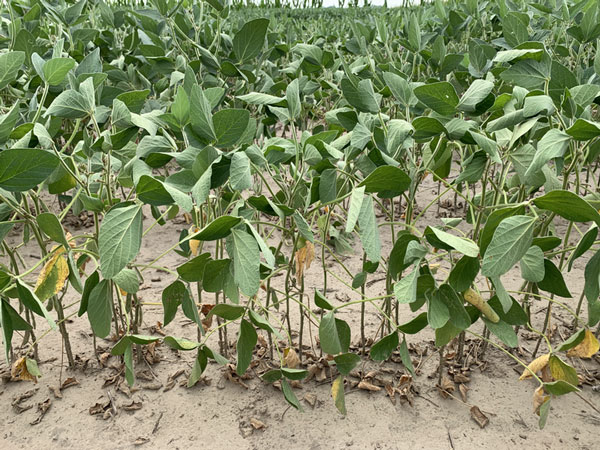
Weather and climate conditions are perhaps the most unpredictable factors affecting soybean yields and, consequently, profitability.
- Temperature: Soybeans thrive in warm temperatures. Both extremely high and low temperatures can negatively impact germination, growth, and pod development. For example, a heat wave during the critical flowering stage can cause flower abortion and reduce pod set, leading to lower yields and reduced profit.
- Rainfall: Adequate and timely rainfall is crucial for soybean production. Drought stress can reduce yields, while excessive rainfall can lead to flooding, disease, and yield loss. A late-season drought, for instance, can reduce yields by 20%, directly impacting net profit. Choosing drought-resistant varieties, a strategy we’ll explore later, can help mitigate the impact of variable rainfall.
- Growing Season Length: A longer growing season generally allows soybeans more time to develop, potentially increasing yields. However, this can be a limiting factor in northern regions.
- Climate Change: Long-term shifts in climate patterns, including increased frequency of extreme weather events, pose a significant challenge to soybean production. Farmers are increasingly adopting climate-smart agricultural practices to mitigate these risks.
Soil Health and Management Practices: The Foundation of Productivity
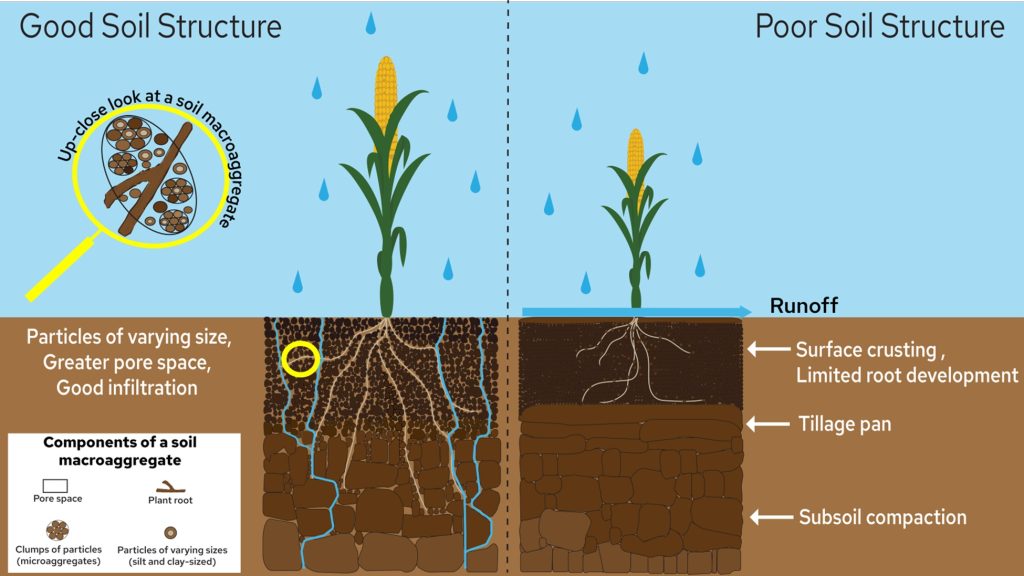
Soil health is the foundation for optimal soybean production. Implementing sound management practices can improve soil health and increase profitability.
- Soil Fertility: Soybeans require essential nutrients like nitrogen, phosphorus, and potassium. Soil testing and appropriate fertilization are necessary to ensure optimal fertility. For example, fields with low phosphorus levels may require additional fertilizer inputs, increasing costs. However, precise nutrient management, which we’ll discuss in the “Strategies” section, can optimize fertilizer use and improve ROI.
- Soil pH: Soybeans prefer slightly acidic to neutral soils. Maintaining the correct pH level is crucial for nutrient availability. If the soil pH is too low, for example, it can limit the availability of essential nutrients, reducing yield potential and profitability.
- Soil Structure: Well-structured soil promotes root growth, water infiltration, and aeration. Practices like no-till farming and cover cropping can improve soil structure. Poor soil structure, on the other hand, can lead to waterlogging and reduced yields, affecting profitability.
- Water Management: Both drought and flooding can reduce soybean yields. Proper water management, including irrigation and drainage, is essential.
Pest and Disease Pressures: Protecting Your Investment
Soybeans are susceptible to a variety of pests and diseases, which can significantly reduce yields and profitability if not managed effectively.
- Pests: Common soybean pests include soybean aphids, soybean cyst nematodes, and various caterpillar species. A severe soybean aphid infestation, for example, can cause significant yield loss if not controlled, impacting profitability. We’ll later discuss integrated pest management strategies to minimize these losses.
- Diseases: Soybean diseases include soybean rust, sudden death syndrome, and white mold.
- Integrated Pest Management (IPM): Implementing an IPM strategy that combines various control measures, including resistant varieties, cultural practices, and judicious use of pesticides, is crucial for managing pests and diseases and minimizing economic losses.
In summary, soybean profitability is influenced by a complex interplay of factors, ranging from weather and soil conditions to pest and disease pressures. Effectively managing these factors is crucial for maximizing your returns. Next, we’ll explore some key strategies that soybean farmers can use to navigate these challenges and enhance their profitability.
Strategies to Maximize Profit Per Acre
And, now, let’s get to the heart of the matter: how can soybean farmers boost their bottom line? Fortunately, several proven strategies can help maximize profit per acre.
Implementing Precision Agriculture: Farming with Finesse
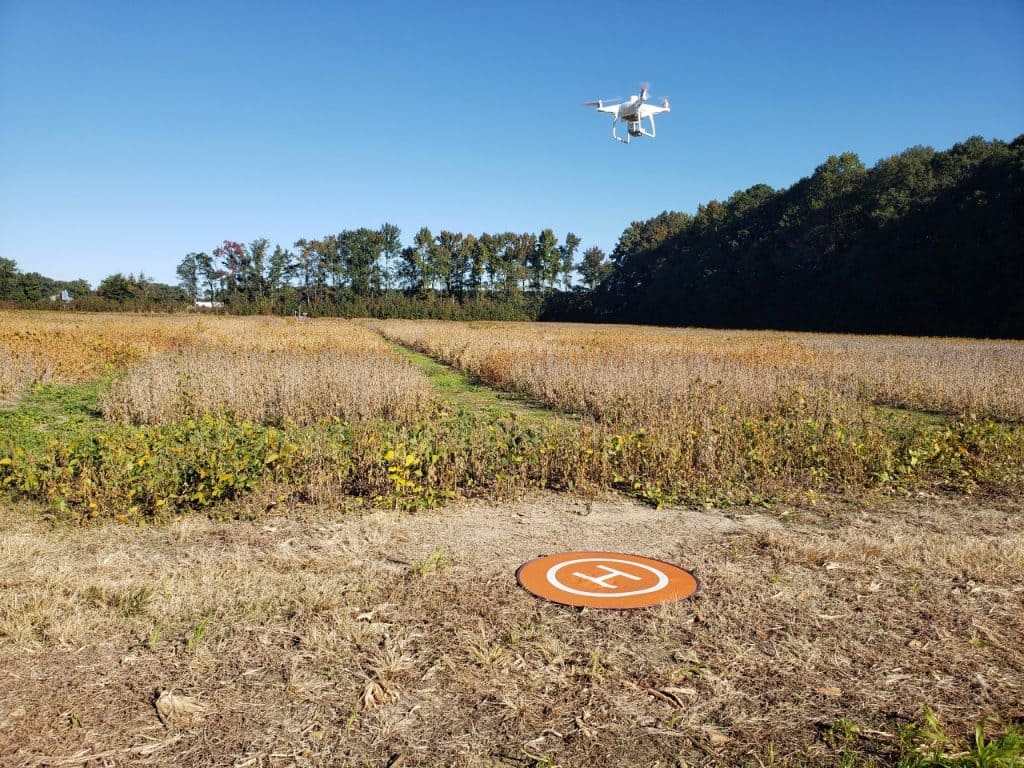
Precision agriculture technologies enable farmers to fine-tune their management practices, optimizing inputs and maximizing yields.
- Variable-Rate Technology (VRT): VRT allows farmers to apply inputs like fertilizers and seeds at varying rates across a field, based on specific soil conditions and crop needs. This prevents over-application in some areas and under-application in others, increasing efficiency and reducing waste. For example, the USDA Economic Research Service reports that VRT adoption is increasing, and while the impact varies, studies suggest VRT can lead to significant cost savings. Specifically, some studies have shown VRT can reduce fertilizer costs by up to 15% and increase net returns.
- GPS and GIS: These technologies enable precise field mapping, input application, and yield monitoring. Farmers in the Midwest, for instance, use GPS-guided systems to ensure accurate seed placement, which improves emergence and stand establishment, ultimately contributing to higher yields.
- Remote Sensing: Satellite or drone imagery can provide valuable data on crop health, nutrient status, and pest infestations, allowing for timely interventions. Many large-scale soybean operations now use drone imagery to detect early signs of stress, allowing for targeted treatment and preventing widespread yield loss.
- Data Analytics: Analyzing data collected from various sources can help farmers identify trends, optimize their practices, and make informed decisions. Companies like Premier Cooperative provide tools to help farmers analyze soil samples and yield data to make better decisions.
Optimizing Planting and Harvesting Times: Timing is Everything
Proper timing of planting and harvesting can significantly impact soybean yields and profitability.
- Planting Date: Planting soybeans at the optimal time for your region can ensure that the crop has a sufficient growing season to maximize yield potential. Research from university extension services, such as the University of Minnesota Extension, often provides guidance on optimal planting windows, which vary by region and seasonal conditions.
- Harvest Timing: Harvesting soybeans at the correct moisture content is crucial. Harvesting too early can result in lower yields, while harvesting too late can lead to shattering and yield loss. Farmers often use moisture meters and local weather forecasts to determine the ideal harvest time.
Cost-Saving Measures and Efficiency Improvements: Trimming the Fat
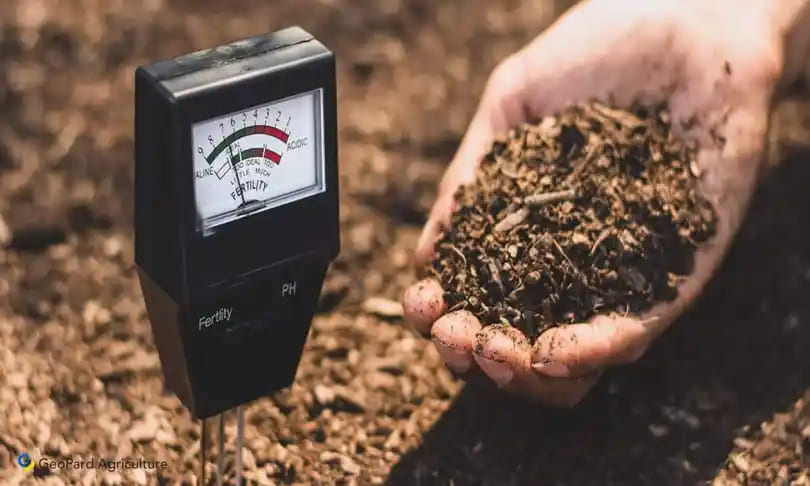
Identifying areas where costs can be reduced without sacrificing yield potential is essential for maximizing profit.
- Input Use Efficiency: Optimizing the use of inputs like fertilizers and pesticides can reduce costs and minimize environmental impact. For example, soil testing can help determine the precise amount of fertilizer needed, preventing over-application.
- No-Till Farming: This practice can reduce soil erosion, conserve moisture, and lower fuel costs compared to conventional tillage. Many farmers in Brazil have adopted no-till farming for soybeans, leading to significant reductions in soil erosion and improved water retention, which stabilizes yields and reduces input costs.
- Integrated Pest Management (IPM): As mentioned earlier, IPM can help minimize pesticide use by employing a combination of control measures, reducing both costs and environmental risks.
By implementing these strategies, soybean farmers can improve their operational efficiency, reduce costs, and ultimately increase their profit per acre. However, even with the best management practices in place, soybean farming involves inherent risks. In the next section, we’ll explore common risk factors and effective risk management strategies to help farmers protect their investments and ensure long-term profitability.
Risk Management in Soybean Farming
But, let’s face it: soybean farming isn’t without its risks. From unpredictable weather to volatile markets, farmers face a range of challenges that can impact their profitability. That’s why having a solid risk management strategy is crucial.
Crop Insurance Options: A Safety Net for Your Harvest
Crop insurance provides financial protection against yield losses due to natural disasters, such as drought, flood, hail, and disease.
- Federal Crop Insurance: The primary source of crop insurance in the United States is the federal crop insurance program, administered by the USDA’s Risk Management Agency (RMA). Farmers can choose from various plans, including:
- Yield Protection (YP): This plan protects against yield losses due to insured perils. For instance, if a farmer’s insured yield is 50 bushels per acre, and they only harvest 30 bushels per acre due to a drought, YP would cover the difference.
- Revenue Protection (RP): This plan protects against both yield losses and price declines. RP is a popular choice as it accounts for market fluctuations. For example, if a farmer expects $12 per bushel but the harvest price drops to $10, RP would provide a higher indemnity than YP.
- Revenue Protection with Harvest Price Exclusion (RPHPE): This is similar to RP but uses the higher of the projected price or the harvest price to calculate the guarantee. RPHPE can be advantageous in years with significant price increases.
- Private Crop Insurance: In addition to federal programs, farmers may also purchase supplemental coverage from private insurance companies. These policies might cover losses not included in federal programs or provide higher levels of coverage.
To navigate these options, farmers can turn to resources like the Illinois Soybean Association, which provides detailed information on crop insurance and risk management specific to Illinois soybean growers.
Diversification Strategies: Don’t Put All Your Eggs in One Basket
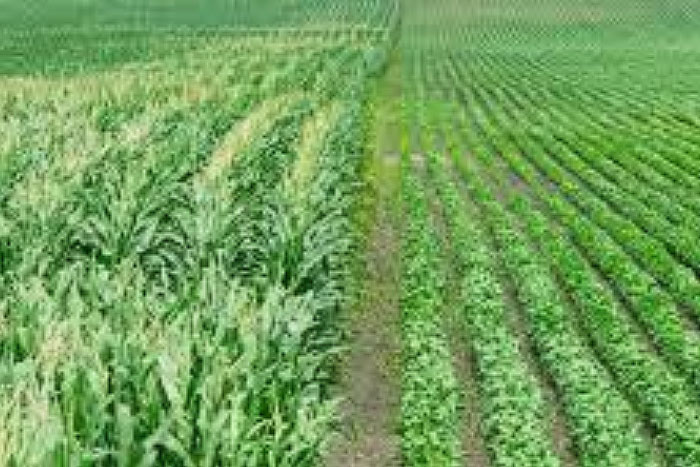
Diversification can help spread risk across different aspects of your farming operation.
- Crop Rotation: Planting different crops in sequence can improve soil health, reduce pest and disease pressure, and stabilize income. For example, rotating soybeans with corn can improve nitrogen availability, reducing the need for synthetic fertilizers and lowering input costs. Studies have shown that corn-soybean rotations can increase overall farm profitability compared to continuous monoculture.
- Variety Selection: Planting a mix of soybean varieties with different maturity dates and disease resistance can help mitigate the impact of adverse conditions. If an early frost hits, for example, a farmer with a mix of early- and late-maturing varieties will still have a portion of their crop reach full yield potential.
- Multiple Income Streams: In addition to selling soybeans, farmers may explore other income sources, such as custom farming, agritourism, or renewable energy production.
Many farmers are finding success with agritourism, offering farm tours, pumpkin patches, and other attractions to supplement their income.
Market Volatility and Price Risk Management: Navigating the Ups and Downs
Soybean prices can fluctuate significantly due to changes in supply and demand, weather conditions, and global economic factors. Farmers can use several strategies to manage this price risk:
- Forward Contracts: These agreements allow farmers to lock in a price for their soybeans before harvest. For instance, a farmer might sign a contract in the spring to sell their fall harvest at a set price, protecting them from a potential price drop.
- Futures and Options: These financial instruments can be used to hedge against price declines or profit from price increases. Futures contracts obligate the holder to buy or sell soybeans at a specific price and date, while options give the holder the right, but not the obligation, to do so.
- Marketing Cooperatives: Joining a marketing cooperative can give farmers more bargaining power and access to better prices.
For example, the Michigan Soybean Cooperative aims to secure the best possible prices for its members by collectively marketing their soybeans.
Managing risk is an essential aspect of successful soybean farming. As Purdue University agricultural economist Dr. Michael Langemeier notes, “Effective risk management involves not only understanding the various sources of risk but also proactively implementing strategies to mitigate their impact. It’s about making informed decisions that protect the farm’s financial health in both good times and bad.”
By utilizing crop insurance, diversifying their operations, and employing effective price risk management strategies, farmers can better protect themselves from potential losses and ensure the long-term viability of their businesses. As the soybean industry continues to evolve, staying informed about emerging trends and opportunities will be crucial for continued success.
Conclusion: Enhancing Profitability in Soybean Farming
And, in the end, what’s the big picture? Soybean farming, while potentially lucrative, demands a multifaceted approach. Farmers who proactively embrace strategies like precision agriculture, optimized planting and harvesting, and cost-saving measures, while simultaneously mitigating risks through insurance, diversification, and market awareness, are best positioned to thrive.
Ultimately, the most successful soybean operations are those that not only focus on maximizing yields but also prioritize long-term sustainability and financial resilience. It’s a balancing act, blending cutting-edge technology with time-honored practices, and staying agile in the face of an ever-changing agricultural landscape. The soybean industry is poised for further transformation.
What are your thoughts? What strategies have you found most effective in boosting your soybean profits? Any insights you’d like to share with fellow farmers? Drop a comment below, and let’s keep this conversation going!
For those looking to take their soybean farming to the next level, here’s a word of advice:
- Stay informed: Continuously update your knowledge on the latest advancements in soybean agronomy, market trends, and risk management tools.
- Seek expert guidance: Consult with agricultural extension services, crop consultants, and industry experts to tailor strategies to your specific farm conditions.
- Network with peers: Engage with other soybean farmers through conferences, workshops, and online forums to exchange ideas and learn from each other’s experiences.
- Embrace innovation: Don’t shy away from experimenting with new technologies and practices that have the potential to enhance your profitability and sustainability.
By staying proactive, informed, and connected, soybean farmers can navigate the challenges and capitalize on the opportunities of this dynamic industry, ensuring a prosperous and sustainable future.

